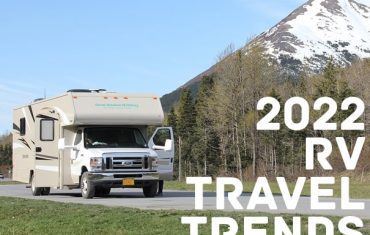CORNERING
The turning radius of a trailer is typically much smaller than that of your vehicle; therefore, a trailer may hit soft shoulders, curbs, trees or other objects when making tight turns. Taking turns sharply can also cause the trailer to strike against and damage the tow vehicle. When approaching a sharp corner, brake sooner than normal to reduce vehicle speed before entering the turn. Drive the vehicle slightly past the normal turning point and then firmly turn the steering wheel. By cornering at a wider angle, both vehicle and trailer should safely clear the inside of the turn.
PASSING
When passing, allow additional time and distance to safely pass the other vehicle. Signal your intention to pass well in advance and, when reentering the lane, make certain your trailer is clear of the vehicle you have passed. Never pass on hills or around curves.
BACKING UP
To back up a trailer, place one hand at the 6 o’clock position on the steering wheel. To move the trailer to the left, move your hand to the left. To move the trailer to the right, move your hand to the right. Back up slowly, and move the steering wheel in small increments to help maintain control. To assist in backing up, it is helpful to have someone outside the vehicle to guide you. Make certain you can see your spotter at all times.
DRIVING ON GRADES
Before going down a steep incline, reduce your speed and shift the transmission into a lower gear. This provides “engine braking” and reduces the need to brake for long periods. When driving up a steep grade, shift to a lower gear for more torque to maintain speed and avoid lugging. Lugging occurs when the vehicle’s engine stutters because it needs to be in a lower gear. Crest the hill no faster than the speed at which you want to descend and in the gear you expect will require little braking. Pay attention to your temperature gauges for any signs of overheating.
PARKING ON GRADES
Parking on steep grades with a trailer is not recommended. If you must, follow this procedure:
- Apply the brakes and shift into neutral.
- Have someone block the trailer’s wheels on the downgrade side.
- Release the brakes until the blocks absorb the load.
- Apply the parking brake and shift into park.
LEAVING YOUR PARKING SPOT ON GRADES
- Hold the brake pedal down and star t the engine.
- Shift into gear and release the parking brake.
- Release brake and drive uphill slightly until free from the blocks.
- Apply brakes and have someone retrieve the blocks.
OVERHEATING
Prolonged driving with overheated fluids can cause damage to your vehicle. If temperature gauges register abnormally high, if there is a marked decrease in power or if you hear unusual engine noises, immediately take the following steps:
- Pull your vehicle to the side of the road. Once stopped, shift into park (automatic transmissions) or neutral (manual transmissions) and apply the parking brakes. Leave the engine running.
- Turn off air conditioning and other accessories to reduce load on the engine. Roll down the windows and turn the heater on to maximum and the fan to its highest setting. The heater core provides a second cooling surface that can help reduce engine temperatures.
- If you suspect that the overheating is the result of climbing a long, steep grade, run the engine at fast idle (around 1500 rpm) until the temperature gauge registers a normal reading.
- With the vehicle in park or neutral and the parking brake engaged and being mindful of traffic, exit your vehicle and look for steam or leaking coolant underneath the engine. If you see either of these, shut the engine off and allow the engine to cool. To avoid being burned, do not attempt to remove the radiator cap until the engine has cooled.
For more trailering tips, check out this helpful video:




